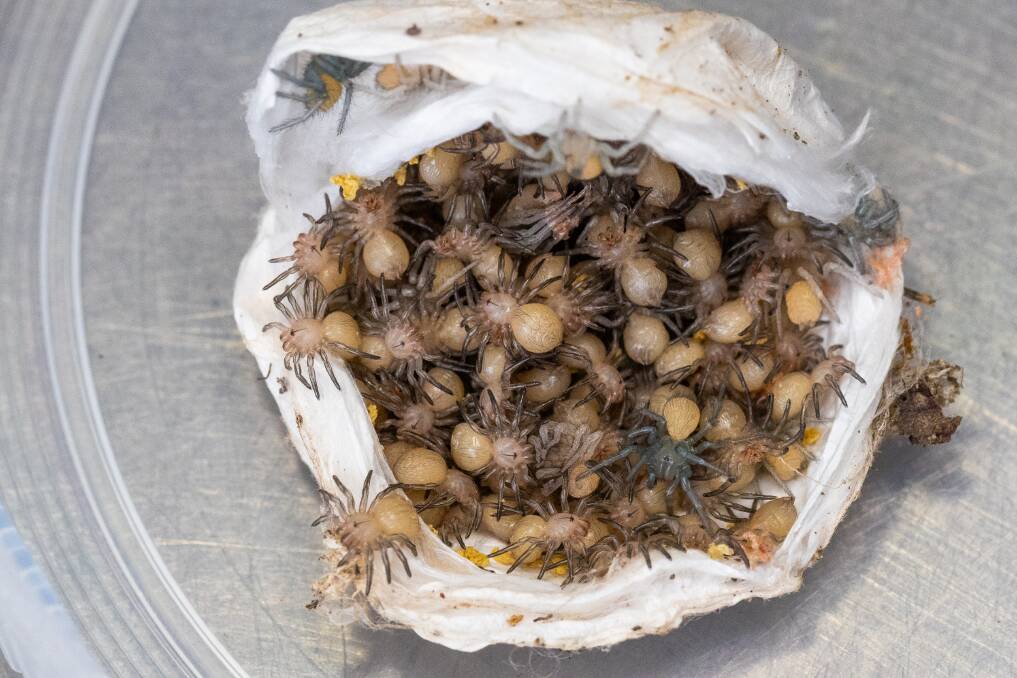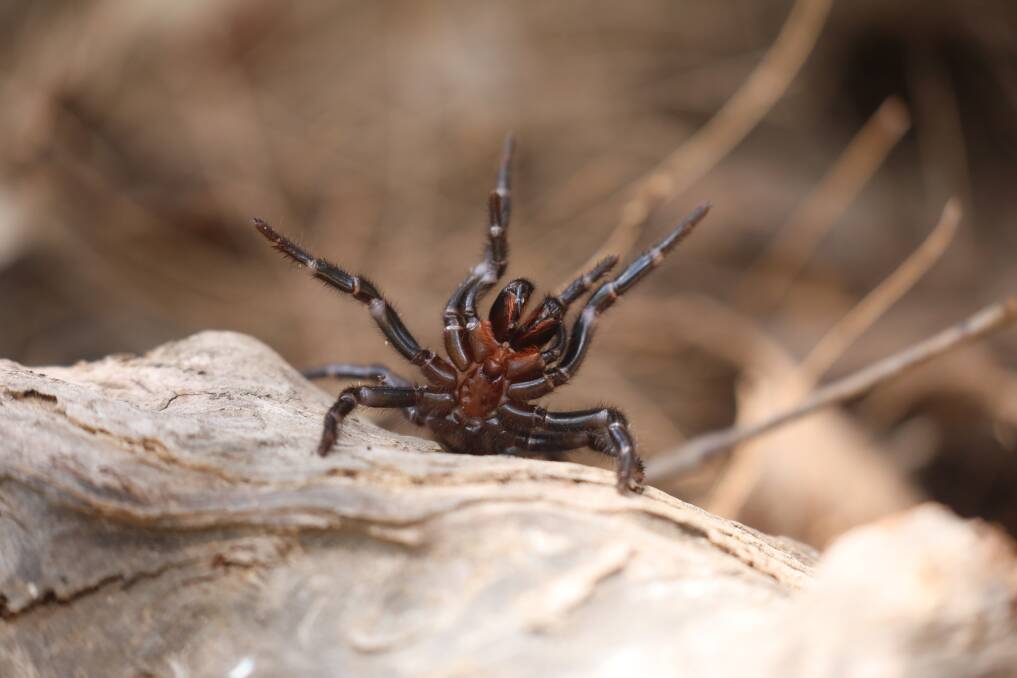Call them creepy, call them cute, but don't call them harmless; these tiny little buddies are venomous.
Create a free account to read this article
$0/
(min cost $0)
or signup to continue reading
The Australian Reptile Park on the NSW Central Coast region has released rare footage of a funnel-web spider egg sac opening.
A member of the public donated the sac - which had more than 100 spiderlings within - to the park. Once mature, the spiders will join the park's spider venom program, where their venom will be used to produce lifesaving antivenom.

With this successful hatching of a donated egg sac, the park is renewing an urgent call for more egg sacs to be handed in while breeding season is in full swing.
The park relies on funnel-web spider donations from the public, with egg sacs often hatching between 50 - 150 spiderlings, making a wonderful source of healthy, robust spiders to contribute to the program.
What is a funnel-web spider?
According to the park's website, the Sydney funnel-web spider is the most venomous spider in the world. Females reach over 35mm in body length and males around 25mm. Their heads are usually a gloss black and tummies are dark brown or purplish in colour. The body and legs are covered with fine hairs.
They like to live in sheltered and shady spots, which are cool and humid. While rainforests and wet sclerophyll forests are their native habitats, well-vegetated private gardens are comfortable for them.
Males reach sexual maturity at four years of age, females a year later. Males will go in search of a mate after a heavy rain when the ground is saturated and the air humid. Females stay in their burrows and wait for a suitor to come past and entice her out of it, and decide whether he should be so lucky, or if he'd be her next meal (no pressure, boys!). The female produces an egg-sack containing a hundred or so eggs and stores this in her burrow until the spiderlings hatch.
Why does the park need spider 'donations' for its venom program?
Spare a though for the critters; the males have a lifespan of about 12 months after they reach maturity, leaving a small timeframe for their venom to be extracted.
"With needing male funnel-web spiders for their venom, along with their short lifespan and needing 150 spiders to produce one vial of antivenom, we need more spiders every single year, and so receiving egg sacs is crucial for our program," said park director Liz Gabriel.
The park is the sole supplier of funnel-web spider venom to make antivenom in Australia. It is encouraging responsible adults to safely collect any funnel-web spiders and egg sacs they may come across and bring them to the park or their nearest participating spider drop off location.

With funnel-web breeding season at its peak, the park is urging residents within the Central Coast, Sydney and Newcastle regions to remain vigilant as funnel-web spiders are on the move, bringing about a higher possibility of these little critters ending up in houses or residential gardens.
Backyards containing dense leaf matter, scrap material or simply backing onto bushland, make for the perfect environment for funnel-webs to burrow and safely breed.

Liz said it's important for people to be across correct first aid procedures and know how to safely catch the spiders. She said it's important to wear enclosed shoes and use a long-handled spoon to maintain a safe distance between yourself and the spider when collecting them and any egg sacs. The spider or egg sac can then be carefully guided into a large jar with a lid and brought into the park or a drop-off location.
If someone is bitten by a funnel-web spiders, or any spider they may think is a funnel-web spider, stay as calm as possible, apply the correct first aid with a pressure immobilisation bandage and get to hospital immediately.
The park's venom program started in 1981 and thankfully, there has not been a single death from a funnel-web spider bite since its introduction.
There are a multitude of participating spider drop off locations across the Greater Sydney Region. To find your nearest location, click here.
For first aid information by Health Direct about funnel-web and other spider bites, click here.
For more information about the Australian Reptile Park, click here.

